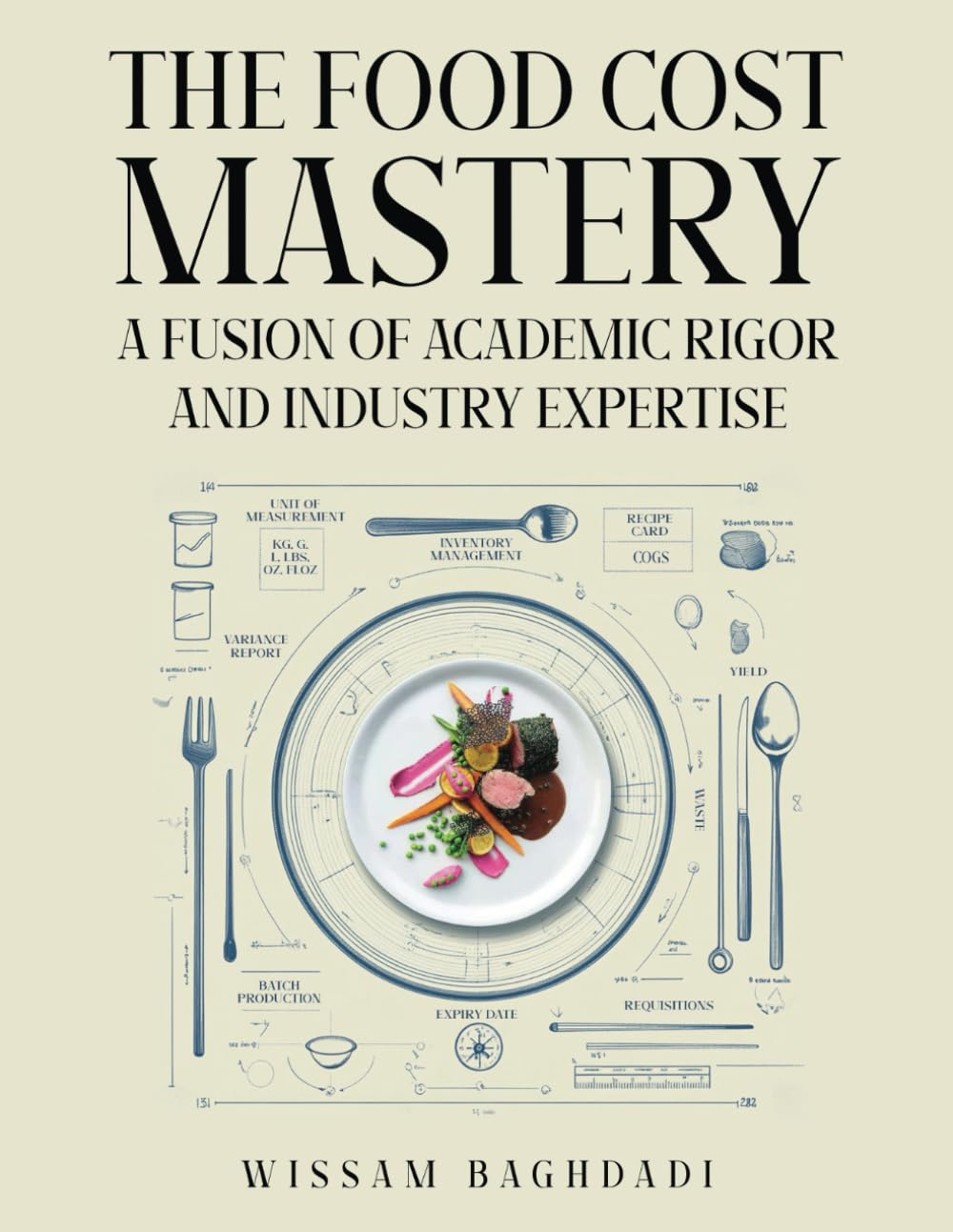
In the fast-paced world of the restaurant industry, operational efficiency is key to providing high-quality service, reducing costs, and maintaining a smooth workflow. As outlined in The Food Cost Mastery: Fusion of Academic Rigor and Industry Expertise by Wissam Baghdadi, one of the most effective ways to enhance kitchen productivity and reduce waste is through a well-planned kitchen layout and equipment placement. A thoughtfully designed kitchen can optimize staff performance, reduce food waste, and improve service speed, which ultimately boosts your bottom line.
1. Minimizing Steps for Efficiency
The kitchen is the heart of a restaurant, and its layout should reflect the need for speed and precision. Baghdadi emphasizes that an efficient kitchen minimizes unnecessary movements by ensuring that all cooking stations are logically arranged. This reduces the time staff spends walking between stations, looking for equipment, or retrieving ingredients.
Practical Solutions:
- Workstation Zones: Organize the kitchen into specific zones (prep, cooking, plating, etc.), with each station placed close to the necessary tools and ingredients. For example, a grill station should be near the pantry for quick access to meats and sauces, while the prep station should be centrally located for easy access to both the cooking area and storage.
- Clear Pathways: Design pathways that allow staff to move freely without bumping into each other. Creating one-way traffic flow helps prevent congestion, reducing delays and increasing overall efficiency.
2. Reducing Food Waste Through Strategic Storage
Efficient food storage is critical in reducing waste and improving inventory turnover. Baghdadi highlights that proper storage in close proximity to the prep and cooking areas helps staff quickly access the ingredients they need without wasting time or resources.
Practical Solutions:
- Proximity to Cooking Stations: Store dry ingredients, vegetables, and proteins in easy-to-reach locations near their corresponding cooking stations. This reduces the time staff spends searching for items, which in turn helps them avoid over-preparing ingredients.
- Cold Storage Optimization: Place refrigerators and freezers strategically so that perishable items are close to prep areas but not in the way of other kitchen operations. A clear system for labeling and rotating stock ensures nothing goes to waste.
3. Optimizing Equipment Placement for Speed
The placement of kitchen equipment plays a crucial role in reducing the time it takes to prepare food and serve customers. Baghdadi stresses that the right tools should be positioned where they are most often used, minimizing the need for staff to move around unnecessarily.
Practical Solutions:
- Hot and Cold Zones: Hot equipment, such as ovens, stoves, and grills, should be placed close to the areas where food is cooked and plated. Similarly, cold storage areas (e.g., refrigerators and freezers) should be near the prep areas for easy access to fresh ingredients.
- Essential Tools at Reach: Frequently used tools like knives, cutting boards, and mixing bowls should be within arm’s reach at each workstation. This reduces downtime spent hunting for tools and keeps the workflow seamless.
4. Energy Efficiency and Cost Reduction
A smart kitchen layout not only boosts staff productivity but also reduces energy consumption. As highlighted in The Food Cost Mastery, a well-designed kitchen minimizes energy wastage, such as unnecessary heat from cooking appliances or excessive cooling from refrigeration units.
Practical Solutions:
- Efficient Equipment Placement: Group cooking equipment that requires similar utilities together. For instance, stoves and grills that require gas should be clustered, while electric appliances should be placed near the necessary power outlets.
- Proper Ventilation: Good ventilation and air circulation reduce the strain on cooking equipment, allowing them to function efficiently and saving on energy costs.
5. Improved Service Speed and Customer Satisfaction
By reducing movement, streamlining processes, and minimizing the time spent on food prep and cooking, a well-designed kitchen directly impacts service speed. Faster service translates into quicker table turnover and higher customer satisfaction—both key to improving your restaurant’s profitability.
Practical Solutions:
- Clear Communication Systems: Place communication devices (e.g., order ticket printers) in convenient locations where kitchen staff can see them without unnecessary movement.
- Team Coordination: Create a kitchen layout that encourages teamwork. For example, placing cooking and prep areas close together fosters collaboration and ensures that orders are processed quickly and accurately.
Optimizing your kitchen layout is one of the most effective strategies for enhancing operational efficiency, reducing waste, and improving service speed. As The Food Cost Mastery by Wissam Baghdadi highlights, a well-organized kitchen not only boosts staff productivity but also cuts energy costs and minimizes food waste. By carefully considering the placement of workstations, storage, and equipment, you can create a streamlined kitchen that supports faster service, reduces overhead, and ultimately leads to a more profitable and sustainable restaurant operation.